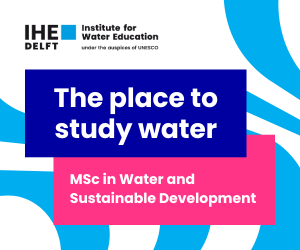Year: 2023
Primary Supervisor: Dr Daniel Goldberg <Dan.Goldberg@ed.ac.uk>
Institution: University of Edinburgh (School of Geosciences )
CASE Partner: Earthwave
Academic Supervisors: Dr Anna Crawford (University of St Andrews), Dr. Hamish Pritchard, Professor Guillaume Jouvet (https://www.unil.ch/index.html)
Research Themes: Artificial Intelligence, Climate, Cryosphere, Glaciology, Machine Learning
Supervisors: Dr. Dan Goldberg, Dr. Hamish Pritchard, Prof. Guillaume Jouvet, Dr Anna Crawford
Project Background: Glaciers in High Mountain Asia (HMA) are experiencing mass loss [1], with implications for the hundreds of millions of people who depend on them for critical water resources [2]. Projections of the likely trajectory of Himalayan glacier mass balance, and associated runoff, are highly uncertain – due in part to lack of knowledge of glacier thickness, which determines glacier response to climate change [3]. With an ever-growing remote-sensing record for the 90,000 glaciers in the region [e.g., 4], there is potential to compute thicknesses regionally and model glacier response to climate change [5], but until now, very few measurements were available to constrain the thickness models. With the completion of the first airborne [6] ice-thickness survey in the Himalayas, covering the glaciers of the Khumbu basin, these models can finally be constrained.
This project will investigate HMA glacier sensitivity to climate warming by combining new field and satellite data products with advanced modelling and machine learning methods. More specifically,
1. Can ML-trained models assimilate/invert for HMA thickness data from satellite data?
2. How do field observations inform and improve such inverse models?
3. How does the improved assessment of glacier thickness and ablation aid in modelling the future behaviour of Asian glaciers in response to climate change?
Methodology: The method for inferring thickness will be based around the python assimilation framework of [5], which makes use of the Instructed Glacier Model, a deep learning emulator [7]. The framework has been applied successfully to Alpine glaciers, but not to HMA glaciers where type and availability of observations differs. The work of the PhD will involve modifying the framework for application to HMA glaciers; preparing and experimenting with inputs based on potential Level-2 and Level-3 EO datasets: elevation change (WorldView [8] and ASTER [9] and Cryosat [1] based data); as well as elevation and glacier velocities (ITS_LIVE). Airborne thickness measurements of select glaciers will be provided by BAS supervisors, allowing validation and refinement of the methodology. Importantly, as IGM has only been trained on and applied to Alpine glaciers, its performance will also be tested on a small subset against a physical glacier model [10], with potential to improve the IGM through further deep learning. The impacts of the improved thickness on future glacier loss will be examined through multidecadal modelling using the IGM
Context: This PhD project will engage strongly with The Big Thaw, a recently-funded BAS-led, cross-institutional NERC Highlight Topics grant which aims to fill key gaps in knowledge of global mountain water resources, but does not encompass novel ML approaches to thickness estimation. The efforts of this PhD will feed into and inform The Big Thaw, and the student will be strongly involved in project meetings and discussions, enabling strong interaction with scientists at BAS, Leeds, and CEH that extend beyond the supervisory team and industry partner
Industry Partner: EarthWave Ltd (https://earthwave.co.uk/) is a data science startup that brings together substantial expertise in remote sensing and artifical intelligence and will aid on high-level computing and data science aspects and also advise on geodetic data for use with inversion
[1] Jakob et al (2020), The Cryosphere 15, 1845-1862. [2] Pritchard, H.D. (2019). Nature 569. [3] Vuille M et al (2018). Earth-Science Reviews 176, 195-213. [4] Millan et al (2022) Nat Geosc, 15, 124-129. [5] Jouvet (2022), J of Glaciol, 10.1017/jog.2022.41 [6] Pritchard et al. (2020), Annals of Glaciology, 61 (81). [7] Jouvet et al (2000), J of Glaciol 68, 651-64.[8] Shean et al (2020), Frontiers in Earth Science, 7, 363. [9] Brun et al (2017). Nat Geoscience, 10(9), 668-673. [10] Gilbert et al (2020), Cryosphere, 14, 1273–1288. [11] Huss and Farinotti (2012), J Geophys Res, 117, F04010.
